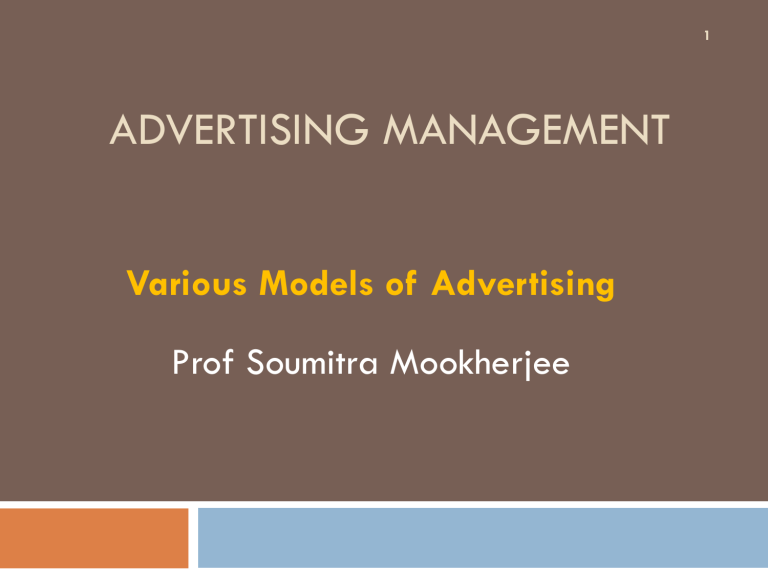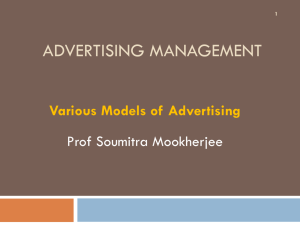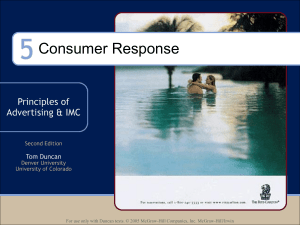
1 ADVERTISING MANAGEMENT Various Models of Advertising Prof Soumitra Mookherjee 2 AIDA MODEL FRAMEWORK A - Attention (Awareness): attract the attention of the customer. I - Interest: raise customer interest by focusing on and demonstrating advantages and benefits (instead of focusing on features, as in traditional advertising). D - Desire: convince customers that they want and desire the product or service and that it will satisfy their needs. A - Action: lead customers towards taking action and/or purchasing. o 3 AIDA MODEL FRAMEWORK A : Attention/Awareness I : Interest D : Desire A : Action To close the loop, add another letter: L : Loyalty/Satisfaction - AIDAS AIDA MODEL FRAMEWORK 4 AIDA MODEL FRAMEWORK 5 HIERARCHY-OF-EFFECTS MODEL 6 Awareness: The communicator’s task is to build awareness, perhaps just name recognition, with simple messages. Consumers must become aware of the brand. This isn’t as straightforward as it seems. The brand name needs to be made focal to get consumers to become aware Knowledge: The target audience might have product awareness and hence this stage involves creating brand knowledge. 1. What are the brand’s specific appeals, its benefits? 2. In what way is it different than competitor’s brands? 3. Who is the target market? HIERARCHY-OF-EFFECTS MODEL 7 Liking: If target members know the product, how do they feel about it? If consumer somewhat unhappy and dissatisfied - it is necessary to first find a solution and then can communicate its renewed quality. Preference: The target audience might like the product but not prefer it to others. In this case, the communicator must try to build consumer preference by promoting quality, value, performance and other features. The communicator needs to measure audience preference before and after the campaign. HIERARCHY-OF-EFFECTS MODEL 8 Conviction: A target audience might prefer a particular product but not develop a conviction about buying it. The communicator has to make efforts to build conviction among the target audience. Purchase: Although convinced consumer may not engage in immediate purchase. They wait for more information or plan to act later. Perhaps the consumer may motivate target consumers by offering the product at a low price, offering a premium, or letting consumers evaluate and conduct trials prior to actual purchase. HIERARCHY-OF-EFFECTS MODEL: EXAMPLE 9 Cognitive stage: In this stage communication messages are informative and provide consumers with facts. This could involve creating a pamphlet or newsletter providing information about the service provider Affective stage: (Emotions) In this stage communication messages are designed to influence attitudes and feelings towards a brand/product/service. This could be achieved by providing contact details for any queries, or possibly a web service Behavioral stage: (Motives) In this stage communication messages are designed to stimulate direction or desires. An email address could be given for people to raise queries or provide feedback, etc. By following up any emails the organization is likely to encourage customers to select their service over other rivals HIERARCHY OF EFFECTS MODEL: SEQUENCE 10




